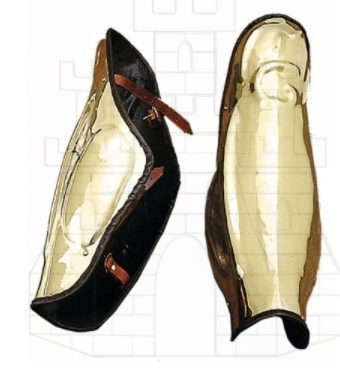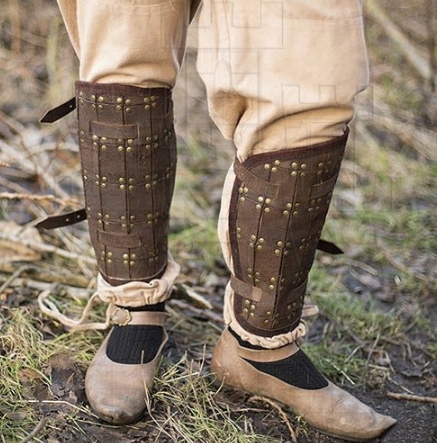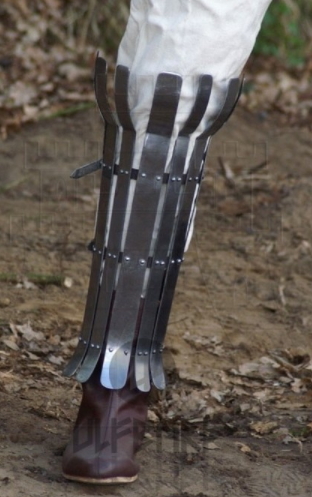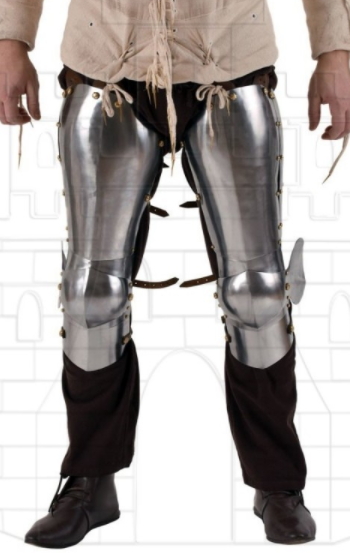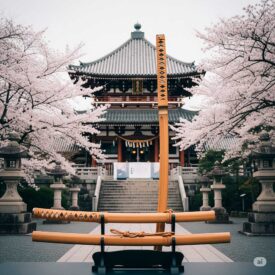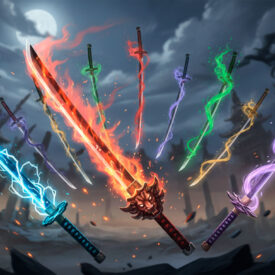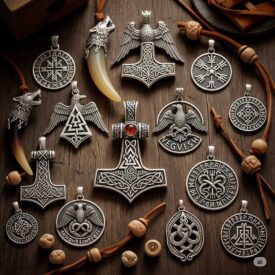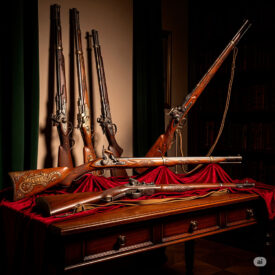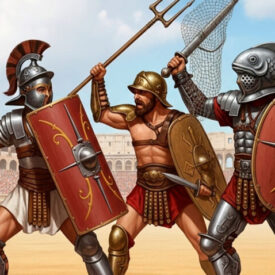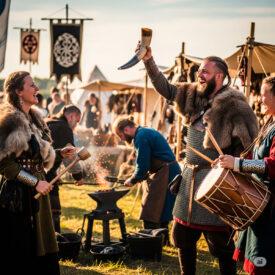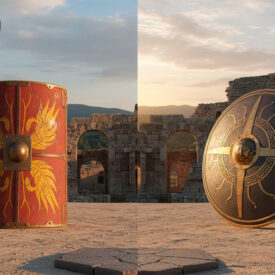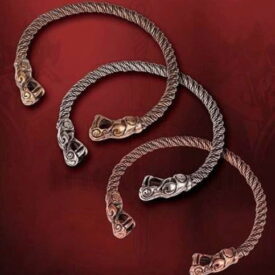In the heat of the battlefield, where every movement could mean the difference between life and death, comprehensive warrior protection was paramount. Among the most vital and often underestimated pieces of armor are greaves, elements specifically designed to safeguard the legs, from the knee to the ankle or even the base of the foot. These defenses not only protected against mortal blows but also allowed the crucial mobility essential for fighting. Their history is a fascinating testimony to technological and tactical evolution across various civilizations, from the mighty Greek phalanxes to the robust medieval knights, passing through Roman influence and Norse adaptations. Join us on this journey through time to uncover the particularities, ingenuity, and vital importance of Spartan greaves, Roman greaves, Viking greaves, and medieval greaves.
The greave, in its most basic conception, is an ancient piece of armor that covered the leg. Although its origin is mainly attributed to Ancient Greece, its use spread and was adapted by various cultures and eras, including the Etruscans, the fearsome Spartans, the disciplined Romans, the daring Vikings, and, of course, throughout the medieval period. Each civilization imprinted its distinctive mark on the design and materials, reflecting their warfare needs, available resources, and technological advances.
Greaves in Ancient Greece: Hoplite Protection and the Spartan Essence
When one thinks of Ancient Greek warriors, it is almost impossible not to picture the formidable hoplite. These citizen-soldiers, the backbone of City-State armies, were recognizable by their distinctive and heavy armor. Within this equipment, Greek greaves, known as “cnemides” (from the Greek knêmis), played an absolutely central role in the protection of the lower limbs.
The main function of cnemides was to specifically protect the warrior’s shins, one of the most exposed and vulnerable parts in close combat. A disabling blow to the leg could mean immobility, falling, and ultimately, death on the battle line. Therefore, their safeguard was essential not only for individual survival but also for maintaining the cohesion and effectiveness of the formation.
Material and Design of Greek Cnemides
Hoplite cnemides were mainly made of bronze, a robust and malleable material that could be shaped to fit the warrior’s anatomy. They were part of a complete “panoply” that, as a whole, could reach a considerable weight, between 22 and 27 kilograms. This gives a clear indication of the level of protection sought by the Greeks for their heavy infantrymen. Historical sources and archaeological finds, such as the “Argos panoply” dated to 720 BC, suggest that already in the 8th century BC there were significant improvements in weaponry, featuring designs that often simulated the musculature of the leg, not only for aesthetics but possibly for better distribution of impact force.
In the compact phalanx formation, protection was a collective effort: a hoplite’s shield (aspis) would protect his left side and, in turn, the right side of his adjacent comrade. However, this arrangement made individual leg protection provided by the cnemides absolutely vital to maintaining the strength and effectiveness of the formation. Although each hoplite covered his own equipment, which could lead to certain individual variations in quality or finish, the essence of leg protection via these bronze greaves remained a hallmark of their formidable infantry. Spartan greaves, in particular, embodied this philosophy of maximum protection for their elite warriors, serving as a quintessential example of Greek military engineering.
Roman Influence: From Adoption to Adaptation of Roman Greaves
Roman military history is intrinsically linked to the Greek. The hoplite armor, including greaves, spread to Etruria and Rome at the end of the 7th century BC, and the Roman legion itself, one of the most influential military forces in history, was developed from the hoplite formation. This brings us to the question of Roman greaves: how did they evolve and what defined them?
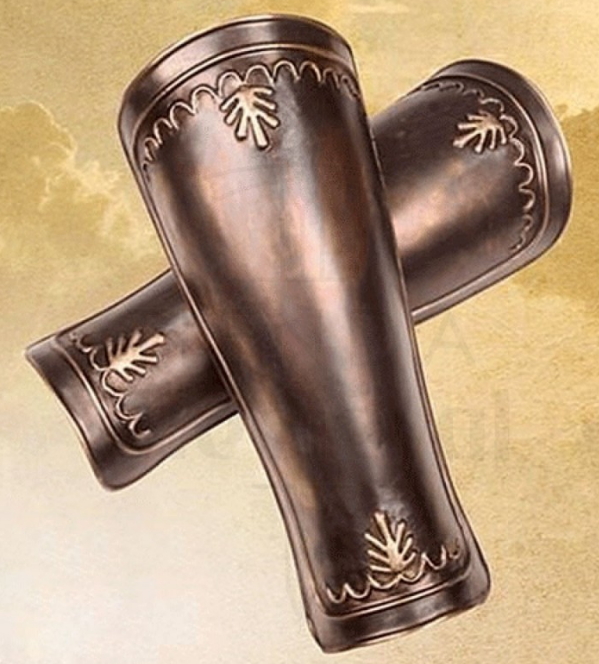
Initially, the Etruscans, and later the Romans, adopted the Greek design of bronze greaves, often unadorned but with the characteristic simulation of leg musculature. These early Roman greaves were usually made of bronze, although leather was also used as an alternative, offering a lighter, more flexible option but with less protection against direct impacts.
The Evolution of Leg Protection in the Roman Empire
However, as the Roman Empire consolidated its power and its military tactics evolved, the use of metal greaves as a standard piece for the common Roman legionary began to disappear. They were gradually replaced by lighter and less restrictive forms of leg protection, such as leather or woolen hose that extended up to the calf. This adaptation likely arose from the need for more mobility on long marches and in the more flexible formations of the legion, in contrast to the rigid Greek phalanx. Protection shifted towards the shield (scutum) and body armor (lorica segmentata or hamata), while the legs received more basic defense, often complemented by robust footwear.
Despite this general trend, greaves never completely disappeared from the Roman world. One notable and particular case is that of the gladiators. Gladiator greaves were an exception to the rule, often worn on a single leg (either right or left, depending on the type of gladiator and their fighting style), although there are rare examples of use on both. These greaves were significantly larger and more robust than those Roman soldiers might have used in early times. They covered almost up to mid-thigh and were firmly secured to the ankle and leg below the calf by straps passing through rings at their edges. Their design reflected the brutal and specialized nature of combat in the arena, where protection of the limbs was crucial for both survival and spectacle.
The Viking Mystery: Leg Protection in the Norse Era and Viking Greaves
The Viking era, with its rapid raids and ferocious combat style, presents a different picture when it comes to armor. Vikings are often thought of as warriors with lighter, more functional armor, prioritizing agility. Finding specific information about Viking greaves in detailed historical sources is challenging, as archaeological evidence and contemporary texts do not always offer such explicit descriptions as in the case of Greek or medieval plate armors.
However, from interpretations of finds and representations, we can infer that leg protection in the Norse era was based more on practicality and available materials. Viking greaves were generally made from leather strips or, occasionally, metal, secured to the leg with buckles or straps. These strips could be sewn to a leather or fabric base, or simply wrapped around the leg in an overlapping fashion. The idea was to provide basic defense against cuts and blows, without sacrificing the mobility essential for raids and fighting in more open formations.
In addition to these rudimentary greaves, it is likely that Norse warriors also used layers of padding (such as thick trousers or bandages) beneath any type of leg armor to absorb impact energy. Chainmail, though not as common as in the later Middle Ages, was also used and could include “mail chausses” for the legs, offering more substantial protection. The Viking philosophy around armor focused on functionality for fast combat and the ability to move easily across varied terrain, reflected in the more adaptable and less rigid nature of their leg protection.
Beyond Antiquity: Leg Protection in Medieval Europe and Medieval Greaves
Medieval European history represents one of the richest and most complex eras in the evolution of armor, and leg protection was no exception. From the earliest medieval centuries to the height of plate armor, innovation was constant, driven by the need to counter ever-more lethal weapons. Medieval greaves are a paradigmatic example of this defensive arms race.
From Mail to Plate: The Evolution of Medieval Greaves
At the start of the Middle Ages and until the mid-12th century, leg protection for warriors was mainly based on “mail chausses.” These were garments made of thousands of small interlinked metal rings, covering the legs and often the feet. While they offered excellent protection against cuts and slashes, their effectiveness was limited against blunt blows, projectile impacts, or direct thrusts, as the force could transfer to the underlying limb, causing bruises or fractures.
The true revolution in medieval greaves began in the late 13th century, particularly in France, with the appearance of the first iron plate shin guards. These pieces, more rigid and resilient, were fastened to the calves with straps and buckles and often supplemented by articulated metal knee guards. This was the start of the transition from mail to plate armor, a change that would completely transform the silhouette of the medieval warrior.
Materials, Adaptation, and Innovation
Besides iron and, later, high-quality steel, leather continued to play an important role in making leg armor. Leather protections offered increased flexibility and lightness, making them valuable in situations where mobility was a priority or as a complement to metal pieces. “Brafonieres,” another type of leg protection, sometimes covered the feet and were constructed from steel rings, similar to mail, illustrating the diversity of defensive solutions.
The 13th century marked a turning point. Warriors sought to give their armor greater strength and reliable protection. Thus, after the invention of the first plate greaves, the idea arose to add an intermediate piece between the greave and the articulated knee guard, seeking more complete and seamless protection. It’s understandable that, for men-at-arms accustomed to the relative flexibility of mail, adapting to the rigidity of iron plates attached to their clothing was a challenge, but the defensive superiority was undeniable.
Evolution continued relentlessly. By the late 15th and early 16th centuries, men-at-arms wore medieval greaves made of two parts. The rear piece completely covered the heel, while the front was joined to the iron shoe or “sabatons,” often with a “duckbill” design composed of articulated plates. These two pieces were opened with springs and closed with buttons on the inside of the leg, allowing for precise adjustment and relatively easy donning and removal of the armor. The mastery of armorers, known as “plattners,” lay in finding the perfect balance between maximum protection and sufficient freedom of movement for the fighter—an engineering and artistic feat.
The manufacture of these pieces required not only tough materials like iron and steel, but also advanced forging, tempering, and polishing techniques to ensure their durability and effectiveness on the battlefield. In addition to their purely defensive function, greaves, like other parts of armor, were often adorned with lavish decorations, engravings, fluting, and gilding that made them extremely expensive in the 16th century, turning them into symbols of status and wealth as well.
Detailed Comparison: Greaves Through the Ages
To better understand the evolution and practical differences among the various leg protection forms, it’s useful to compare Spartan greaves (Greek), Roman greaves, Viking greaves, and medieval greaves.
Greek Greaves (Cnemides)
- Material: Mainly bronze.
- Design: Molded to simulate leg musculature, often with no visible straps, relying on the elasticity of the metal for fit. Covered the shin.
- Function: Vital protection in the phalanx, defending a vulnerable area in close combat.
- Advantages: High protection against direct blows, impressive appearance.
- Disadvantages: Heavy, could be restrictive for movements outside the formation.
- Ideal Use: Heavy infantry in close formations.
Roman Greaves
- Material: Bronze and leather in early stages. Later, metal greaves usage for the common legionary declined.
- Design: Initially similar to Greek. For legionaries, shifted to leather/wool hose. Gladiator greaves were large, asymmetrical (one leg), and covered up to mid-thigh.
- Function: Initial shin protection; in the Empire, mobility and shield took on greater importance. For gladiators, crucial protection in individual combat.
- Advantages: Adaptability (legionaries), specialized protection (gladiators).
- Disadvantages: Less overall leg protection for legionaries compared to hoplites.
- Ideal Use: Early legions, gladiators.
Viking Greaves
- Material: Mainly leather, sometimes reinforced with metal strips.
- Design: Strips of material fastened with buckles or straps, often over padding. More flexible and lightweight.
- Function: Basic protection against cuts and blows, prioritizing mobility for raids and open combat.
- Advantages: Lightweight, flexible, great mobility.
- Disadvantages: Less protection against blunt impacts compared to solid metal.
- Ideal Use: Warriors who value agility and fast movement.
Medieval Greaves
- Material: Mail (mail chausses), later iron and steel (plates).
- Design: Evolution from mail chausses to plate shin guards, then to articulated pieces covering the whole leg, including the foot (sabatons) and groin (tassets).
- Function: Complete leg protection against all kinds of attacks, essential for the armored knight’s survival.
- Advantages: Superior protection, articulation for mobility, potential for embellishment.
- Disadvantages: Very heavy, costly to produce, require maintenance.
- Ideal Use: Knights, heavy infantry, and elite in the Late Middle Ages.
Choosing the Perfect Greave: A Guide for Collectors, Reenactors, and Enthusiasts
Choosing a pair of greaves, whether for collection, historical reenactment, or simply out of interest in ancient armor, depends largely on the user’s profile and interests. Each type of greave offers a different experience and meaning.
For the Beginner and Casual Enthusiast
If you’re new to the world of historical armor or looking for a decorative piece that evokes a particular era, replicas of Spartan greaves or Roman greaves can be an excellent starting point. Their classic and recognizable design makes them iconic pieces. Look for models with aesthetic priority and good finish, without requiring extreme functionality for combat. Leather greaves, more affordable and lighter, are also a fantastic option for costumes or themed events.
For the Reenactor and Adventurer
For those involved in historical reenactment or simulated combat events, authenticity and functionality are key. If your focus is on Ancient Greece, well-replicated bronze or steel cnemides that simulate elastic fit are essential. For a Roman reenactor, wool or leather hose, or gladiator greaves if your character requires, will be most appropriate. Viking enthusiasts should look for Viking greaves in reinforced leather or with metal strips, allowing great mobility and matching the Norse combat style. It’s crucial to research the historical accuracy of materials and fastening methods to ensure a faithful and safe representation.
For the Collector and Expert
Collectors and armor experts will seek high-fidelity replicas or even original pieces (if budget allows). For them, detail precision, authentic materials (genuine bronze, tempered steel), forging techniques, and articulation systems are of utmost importance. Medieval plate greaves, with their complex strap, buckle, and articulation systems, present a fascinating challenge for the study and appreciation of armorer craftsmanship. Researching primary sources and consulting experts in historical armor are fundamental steps to acquiring pieces of the highest quality and accuracy.
Regardless of your profile, when acquiring any type of greave, always consider material quality, craftsmanship, and, if for active use, safety. Ensure that straps and buckles are sturdy and the fit is comfortable to prevent chafing or restriction of movement.
A Legacy of Protection and Ingenuity: Beyond the Battlefield
Greaves and other leg protections, from the Greek bronze cnemides that protected hoplites, through Roman adaptations and functional Viking greaves, to the complex and articulated medieval plate greaves, are much more than simple pieces of military equipment. They are tangible testimony to the unending race between offensive and defensive technologies throughout human history. Each piece, with its specific materials (bronze, leather, iron, steel), manufacturing techniques (forging, tempering, polishing), and designs adapted to anatomy and tactics, fulfilled not only a practical purpose to safeguard the warrior but also symbolized human ingenuity, status, wealth, and the unparalleled mastery of artisans of each era.
The study and appreciation of these armors allow us to immerse ourselves in the past, understanding the incredible skill and deep knowledge required to create these magnificent protective pieces. Their legacy endures, reminding us of the importance of innovation and the human capacity to adapt and face the greatest challenges, whether on the battlefield or in any other aspect of life. If you have a passion for history, reenactment, or simply admire the art of armory, we invite you to explore our complete collection and find those pieces that connect you with the spirit of the warriors of the past.
You can SEE MORE PERIOD GREAVES, discover a wide range of LEG PROTECTION, or explore other ARMOR PIECES that will transport you directly to the greatness of the ancient and medieval ages.


